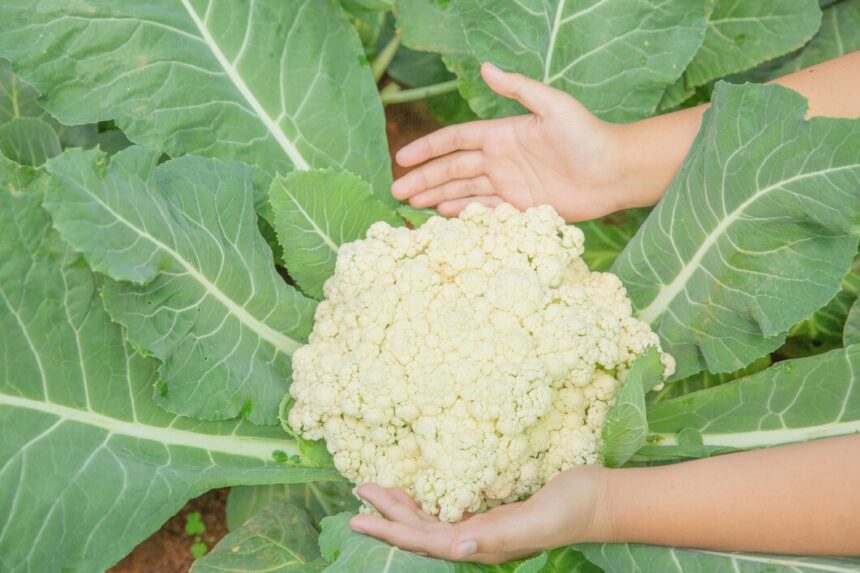Clubroot, caused by the soil-borne pathogen Plasmodiophora brassicae, is a serious disease affecting cauliflower and other brassica crops. Early detection is crucial to prevent its spread and minimize crop damage. Here are ten signs to watch for to identify clubroot in your cauliflower plants:
- Stunted Growth: Infected plants exhibit reduced growth compared to healthy counterparts. Cauliflower heads may fail to develop fully, and overall plant vigor is compromised.
- Yellowing and Wilting Leaves: Leaves of infected plants may turn yellow prematurely, even while the plant is still young. Wilting and drooping of leaves can occur despite adequate moisture.
- Root Deformities: Check roots for abnormal swellings or galls, which are characteristic of clubroot infection. These swellings disrupt the normal root structure and impair nutrient uptake.
- Reduced Root System: Infected plants may have a poorly developed or restricted root system. Roots can appear stubby, distorted, and may lack fine feeder roots essential for nutrient absorption.
- Delayed or Uneven Maturity: Clubroot-infected plants often show delayed maturity compared to healthy plants. This can result in uneven growth and maturity within the crop.
- Wilting During Heat: Plants infected with clubroot may exhibit increased susceptibility to heat stress, showing wilting symptoms even when soil moisture levels are adequate.
- Yellowing of Lower Leaves: Lower leaves of infected plants may yellow and wilt prematurely, progressing upwards as the disease advances. This is often accompanied by general plant decline.
- Poor Response to Fertilization: Infected plants may show poor response to fertilizers, despite adequate nutrient application. This is due to compromised root function and nutrient uptake.
- Rounded and Distorted Leaves: Leaves may become distorted and appear rounded or puckered, especially near the growing points. This deformation is a result of disrupted growth caused by the pathogen.
- Soil pH and Moisture: Clubroot thrives in acidic soils (pH 5.2-5.5). Monitor soil pH and moisture levels regularly, as these conditions favor disease development and should be managed accordingly.
Managing Clubroot
Early detection and prompt action are crucial in managing clubroot. If you suspect clubroot infection in your cauliflower crop, consider the following management strategies:
- Crop Rotation: Rotate brassica crops with non-host plants to break the disease cycle.
- Soil Amendments: Adjust soil pH to slightly alkaline levels (pH 7.2-7.5) through liming to suppress pathogen activity.
- Resistant Varieties: Plant clubroot-resistant cauliflower varieties where available.
- Sanitation: Practice strict sanitation measures to prevent the spread of soil-borne pathogens on equipment and footwear.
- Avoid Waterlogged Conditions: Ensure proper drainage to reduce soil moisture and minimize favorable conditions for pathogen growth.
By staying vigilant and implementing these strategies, farmers can effectively manage clubroot and protect cauliflower crops from severe yield losses. Regular monitoring and proactive management are key to maintaining healthy brassica crops in the face of clubroot challenges.
Join 'Farmers Mag' WhatsApp Channel
Get the latest Farming news and tips delivered straight to your WhatsApp
CLICK HERE TO JOIN






